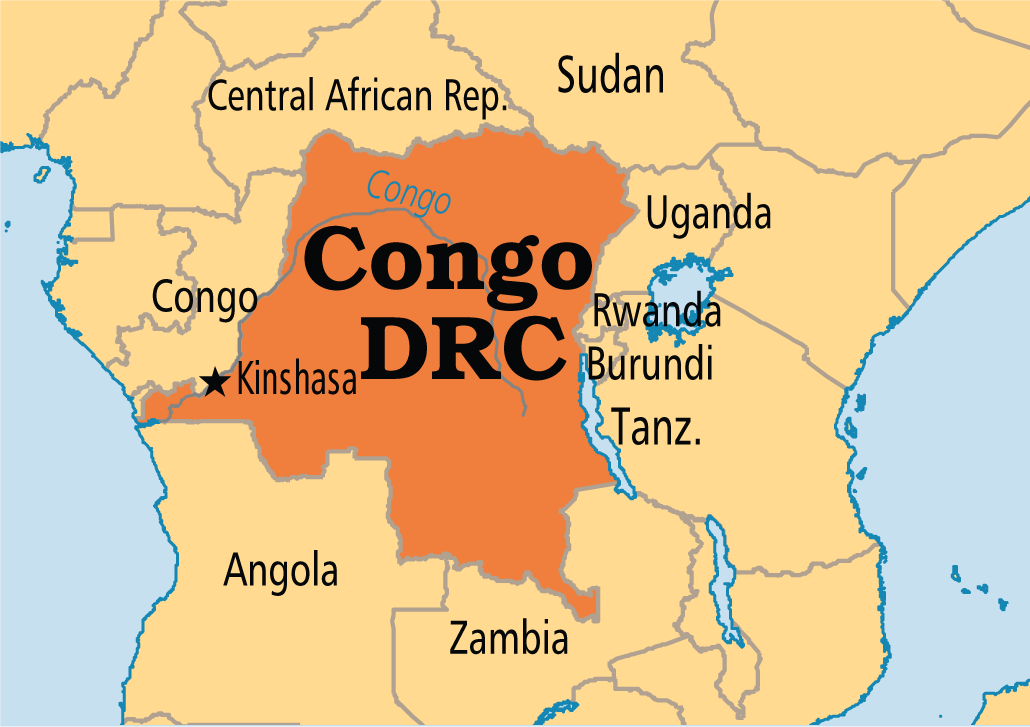Important Facts For Prelims
Displacement in Democratic Republic of Congo
- 15 Nov 2023
- 5 min read
Why in News?
The UN International Organization of Migration (IOM) recently reported a surge in internal displacement in the Democratic Republic of Congo (DRC), reaching a staggering 6.9 million.
- In the eastern province of North Kivu, nearly a million people have been displaced due to the ongoing conflict with the rebel group, Mouvement du 23 Mars (M23).
What Factors Contribute to the Widespread Displacement in Congo?
- Conflict in the DRC:
- Originating in the 1990s with civil wars in 1996 and 1998, the DRC conflict was exacerbated by the aftermath of the 1994 Rwandan genocide, where ethnic Hutu extremists killed around one million minority ethnic Tutsis and non-extremist Hutus.
- The eastern DRC, bordering Rwanda, has since faced insurgency from over 120 rebel groups ( as per UN Report), leading to heightened tensions and violence.
- Territorial disputes and resource competition fuel the conflict, resulting in substantial casualties.
- Recent resurgence of the Tutsi-led M23 rebel campaign from November 2021 has further intensified security challenges, with M23 making notable advances since January 2023.
- Major Stakeholders in the Conflict:
- Noteworthy rebel groups, in addition to M23, encompass the Allied Democratic Forces (ADF) and the Cooperative for Development of the Congo (CODECO).
- ADF, an insurgent group based in Uganda since 1999, pledged allegiance to the Islamic State in 2019.
- CODECO asserts its mission to safeguard the interests of the ethnic Lendu against the Hemas and the Congolese army.
- Noteworthy rebel groups, in addition to M23, encompass the Allied Democratic Forces (ADF) and the Cooperative for Development of the Congo (CODECO).
- Causes of Displacement:
- Ethnic Intolerance and Insurgency: Post-Rwandan genocide, two million Hutu refugees migrated to North and South Kivu, sparking ethnic militias and escalating tensions.
- Political Uncertainty and Governance Issues: The current President of DRC faces election challenges amid ongoing insecurity, risking the integrity of a "free, democratic, and transparent" vote.
- Regional Tensions: Armed groups, backed by Rwanda, Uganda, and Burundi, act as proxies, heightening conflict dynamics and regional instability.
- Humanitarian Crisis: Kivu Security Tractor reports 1,400 fatalities and 600+ attacks in 2023.
- Over 1.1 million people in North Kivu, Ituri, and South Kivu need food support, as international response, particularly in funding, remains insufficient.
What are the Major Facts Related to DRC?
- Geography
- The DRC is the second largest country in Africa and the 11th largest in the world.
- It has 37 kilometers of coastline and more than half of the country is covered by dense tropical rainforest.
- Capital:
- Kinshasa is the capital of the DRC and is located on the Congo River.
- Bordering Countries:

- Languages:
- The official language is French, but other languages include Kituba, Lingala, Swahili, and Tshiluba.
- Currency:
- Congolese franc (CDF).
- Natural Resources:
- It is rich in natural resources. This includes timber, oil and gas, gold and diamonds, as well as minerals critical to the energy transition, like cobalt and copper.
- Major Species:
- Great apes such as bonobos and eastern lowland gorillas can only be found in Congo.
UPSC Civil Services Examination, Previous Year Question (PYQ)
Q.1 Consider the following pairs: (2022)
Country Important reason for being in the news recently
- Chad – Setting up of permanent military base by China
- Guinea – Suspension of Constitution and Government by military
- Lebanon – Severe and prolonged economic depression
- Tunisia – Suspension of Parliament by President
How many pairs given above are correctly, matched?
(a) Only one pair (b) Only two pairs
(c) Only three pairs (d) All four pairs
Ans: (c)
Q.2 About three-fourths of world's cobalt, a metal required for the manufacture of batteries for electric motor vehicles, is produced by (2023)
(a) Argentina
(b) Botswana
(c) the Democratic Republic of the Congo
(d) Kazakhstan
Ans: (c)
Exp:
The Democratic Republic of Congo (DRC) is by far the world's largest producer of cobalt, accounting for roughly 70 percent of global production. Hence, option (c) is correct.
Q.3 Which one of the following is a part of the Congo Basin? (2023)
(a) Cameroon
(b) Nigeria
(c) South Sudan
(d) Uganda
Ans: (a)
Exp:
The Congo Basin spans across six countries—Cameroon, Central African Republic, Democratic Republic of the Congo, Republic of the Congo, Equatorial Guinea and Gabon. Hence, option (a) is correct.




